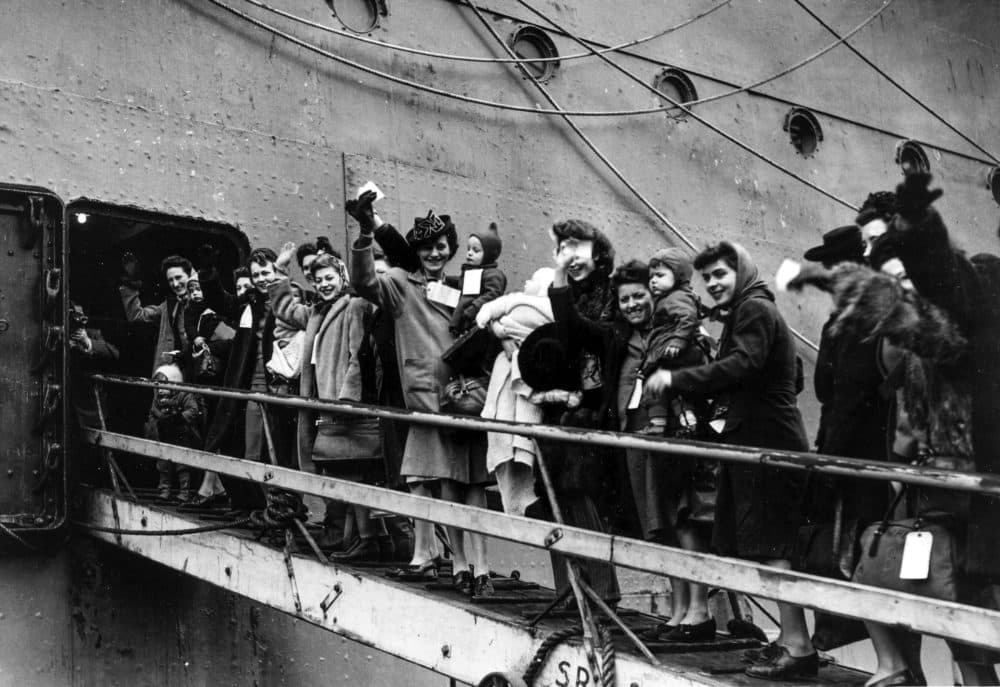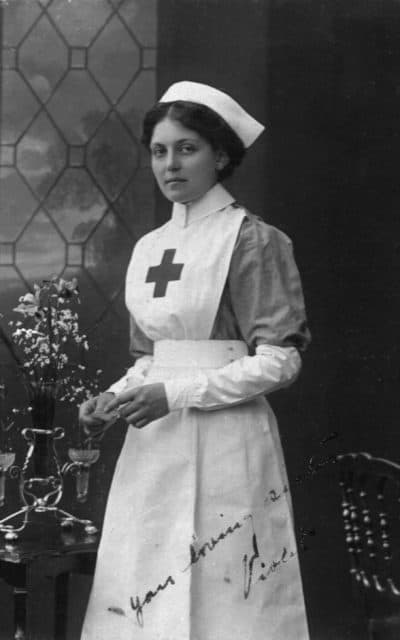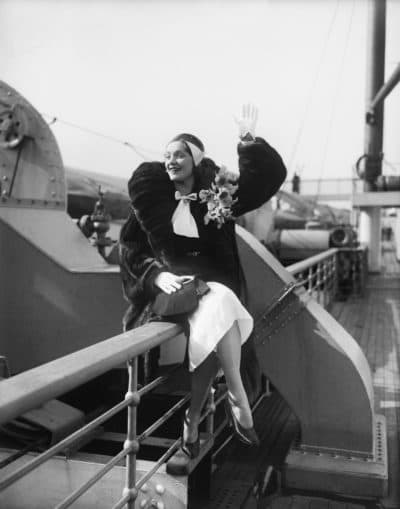Advertisement
How Transatlantic Ocean Liners Ferried Women Into The Workforce

When people think of women on cruise ships in the early 1900s, many probably picture wealthy heiresses with hatboxes.
Among them were Gloria Vanderbilt and her twin sister, Thelma Furness, the longtime mistress of the Prince of Wales until Furness introduced him to her friend Wallis Simpson. He promptly sailed off with Simpson, abdicating the throne.
But in the new book, "Maiden Voyages: Magnificent Ocean Liners and the Women Who Traveled and Worked Aboard Them" author Siân Evans’ includes the women below deck — immigrants coming to find work in the U.S., fleeing Nazi Germany or joining their husbands after World War II. Cruise ships were repurposed to bring pregnant war brides pregnant to the U.S.
“It was a leap in the dark as indeed traveling transatlantic always was in those days: If you left your home country, you might not see those people that you loved ever again,” Evans says. “And one of these women described herself famously as ‘heartsick, lovesick and seasick.’ ”
Evans shared these womens’ stories at a recent virtual event put on by the American Ancestors Speaker series from the New England Historic Genealogical Society.
There was great danger on the ships: The Titanic struck an iceberg. The Lusitania was torpedoed in 1915. The Britannic hit a mine in 1916.

Violet Jessop survived all three sinkings and witnessed lifeboats being lowered from the Britannic right into rising propellers. Jessop was a stewardess serving first-class passengers — part of a new female workforce unparalleled on land.
“The unsinkable stewardess” left the Britannic in a lifeboat and watched in horror as the propellers ingested other boats, Evans says. Jessop dived out of her boat all while sustaining a head injury and was rescued.
Women like Jessop — stewardesses, cooks, cashiers — learned how to operate lifeboats to take charge of their fate.
“A lot of these women were really quite punchy, feisty women in the ‘20s and ‘30s who thought, ‘well, I'm not going to be some poor little sap.’ ” she says, “ ‘I'm going to learn how to steer and row a lifeboat so I've got some control of my own destiny.’ ”
Edith Sowerbutts worked on ships as a conductress tasked with looking after unaccompanied, third-class women and children on the ship. Sowerbutts first started working as a typist but realized she hated typing, so she found work on ships, Evans says. The author read Sowerbutt’s unpublished memoir at the Imperial War Museum in London.
Advertisement
One immigrant named Mary Anne MacLeod, the youngest of 10 in a Scottish family, traveled to New York in third class and met a man named Fred Trump. She later gave birth to former President Donald Trump.
“[MacLeod] managed to scrape together enough money in 1930 to set out for New York,” Evans says. “She put herself down as a domestic servant, as most women did, because if you didn't put down domestic servant, they might not let you in.”
For people trying to research specific voyages, Evans recommends starting by searching the names of ships or ancestors on Google. Then, consult a local historical or genealogy society as well as records from entry points to the U.S. such as Ellis Island. And try contacting the Steamship Historical Society of America.
In her research, Evans consulted the Cunard Archives at the University of Liverpool, Imperial War Museum archives and the British Library. Archives like Cunard include passenger lists, though they often only keep names for first and second class.
Finding records of third-class passengers takes some work, she says, but “it isn’t impossible.”

At the British Library, Evans looked at daily newspapers produced onboard the ships. A paper published on the Aquitania in 1914 talked about Queen Mary planning to spend her summer vacation with German relatives and the prince of Wales considering marriage to one of the Russian czar’s daughters — right before everything came to a halt in Europe, she says.
“There's a little news in brief in the same newspaper, which says that the body of Franz Ferdinand, who was the heir to the Austrian throne, has been taken back to Trieste for burial following his assassination,” she says. “And that's the first inkling you get of World War I.”
Aboard these ships, women worked as stewardesses, conductresses and swim coaches. At least one woman named Victoria Drummond worked as an engineer. There's a description of Drummond piloting a ship while it's under attack, holding the vessel together with hot, steaming, scalding water on her.

Transatlantic cruise ships changed the lives of women by giving them agency, Evans says.
“These were the women whose examples allowed women to go and work full time aboard ships, allowed them to train as engineers, allowed women to become pilots,” she says. “If you can work on board a ship, you could work on a plane.”
And the ships also carried “tales of bravery, bravery on the part of women who we've never heard of,” Evans says.
The ships allowed women to travel the world, something many desperate people from Germany took advantage of after World War I. Desperate to feed her family, one former stewardess stowed away on board a ship in a ballast full of gravel that stops the ship from rocking, Evans says.
Surviving on a bottle of water and some ham, the woman hid in the gravel for five days before banging on the hatch, which was locked from the outside. Thankfully, someone heard her over the engines and she was allowed to travel to New York because she’d made it more than halfway, Evans says.
“Her story [was] reported in The New York Times,” Evans says. “And you think, how brave do you have to be to lie in gravel? How desperate are you? My God, they were brave.”
Robin Young and Emiko Tamagawa produced and edited this interview for broadcast. Allison Hagan adapted it for the web.
Book Excerpt: 'Maiden Voyages'
By Siân Evans
This segment aired on September 6, 2021.

